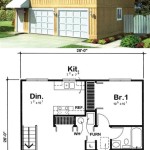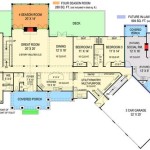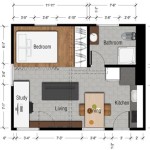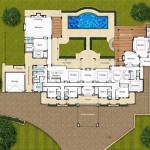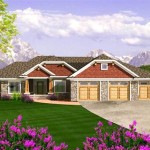How Much Should House Plans Cost?
Determining the cost of house plans is a crucial step in the home building process. The expense can vary widely depending on several factors, including the complexity of the design, the size of the house, the level of detail included in the plans, and the professional providing the service. Understanding these cost drivers helps prospective homeowners budget effectively and make informed decisions regarding their architectural plans.
The cost of house plans is not simply a fixed amount; it is an investment in the future of the home. Well-designed plans can save money in the long run by preventing construction errors, ensuring energy efficiency, and optimizing space utilization. Conversely, poorly designed plans can lead to costly revisions, construction delays, and functional problems that detract from the overall value and enjoyment of the home. Therefore, approaching the selection and budgeting for house plans with a clear understanding of the contributing factors is essential. This article seeks to detail the various components influencing the price, providing a comprehensive guide to navigating the intricacies of house plan costs.
Factors Influencing the Cost of House Plans
Several key elements contribute to the overall cost of house plans. These include the size and complexity of the design, the level of customization involved, the reputation and experience of the architect or designer, and the types of services included in the plan package. An understanding of these factors is essential for homeowners seeking to navigate the market effectively and secure plans that align with their budget and specific needs.
The size of the house is a primary driver of cost. Larger homes naturally require more extensive plans, encompassing more details and requiring more time to develop. The complexity of the design also plays a crucial role. A simple rectangular house will generally be less expensive to plan than a multi-story home with intricate rooflines, numerous angles, and custom features. Each level of complexity adds to the time and effort required by the architect or designer, which is directly reflected in the price.
Customization is another significant factor influencing the price. Stock plans, which are pre-designed and available for purchase, are typically less expensive than custom plans tailored to the homeowner's specific needs and preferences. Custom plans involve a more collaborative process, where the architect works closely with the homeowner to translate their vision into a functional and aesthetically pleasing design. This process involves multiple revisions and requires a greater investment of time and expertise.
The reputation and experience of the architect or designer also impact the cost. Established professionals with a proven track record typically charge higher fees than less experienced individuals. This is because their expertise and experience can provide valuable insights, potentially saving the homeowner money in the long run by avoiding costly mistakes and optimizing the design for functionality and energy efficiency. The type of services included in the plan package is another consideration. Some packages include only the basic architectural drawings, while others offer a more comprehensive service that includes structural engineering, mechanical, electrical, and plumbing (MEP) drawings, and even assistance with obtaining building permits.
Common House Plan Pricing Models
Architects and designers employ different pricing models for house plans. The most common methods include cost per square foot, hourly rates, and a fixed fee. Each model has its advantages and disadvantages, and the most appropriate choice often depends on the scope of the project, the complexity of the design, and the homeowner's preferences.
The cost per square foot model is a widely used method, particularly for new construction projects. It involves charging a certain amount for each square foot of the house's total area. This model provides a relatively straightforward way to estimate the cost of the plans, as it is directly linked to the size of the house. However, it is essential to note that the cost per square foot can vary depending on the complexity of the design and the level of detail included in the plans. For example, a high-end custom home with intricate features will typically have a higher cost per square foot than a simpler, more standard design.
Hourly rates are another common pricing model, particularly for smaller projects or renovations. Architects and designers charge an hourly fee for their time, which can be beneficial for projects that are difficult to estimate upfront. This model allows for flexibility and can be advantageous if the scope of the project changes during the design process. However, it can also be difficult to predict the total cost of the plans, as the number of hours required may vary depending on the complexity of the design and the homeowner's level of engagement. It is crucial to establish a clear understanding of the hourly rate and to obtain regular updates on the number of hours spent on the project.
A fixed fee is a pricing model where the architect or designer charges a set amount for the entire project. This model provides the homeowner with a clear understanding of the total cost of the plans upfront, which can be helpful for budgeting purposes. However, it is important to ensure that the fixed fee includes all the necessary services and deliverables, such as architectural drawings, structural engineering, and MEP drawings. It is also essential to clarify what happens if the scope of the project changes during the design process, as this may require additional fees.
Strategies for Managing House Plan Costs
Homeowners can employ several strategies to effectively manage the cost of house plans. These strategies include careful planning, thorough research, and effective communication with the architect or designer. By taking a proactive approach, homeowners can ensure that they receive high-quality plans that align with their budget and needs.
Careful planning is essential for managing house plan costs. Before engaging an architect or designer, homeowners should have a clear understanding of their needs, preferences, and budget. This includes determining the desired size of the house, the layout of the rooms, the style of the architecture, and any specific features or amenities that are essential. Creating a detailed list of requirements and priorities can help the architect or designer develop a design that meets the homeowner's needs while staying within budget. It is also helpful to gather inspiration from various sources, such as magazines, websites, and model homes, to communicate a clear vision to the architect or designer.
Thorough research is another crucial strategy for managing house plan costs. Homeowners should research different architects and designers, comparing their experience, reputation, and pricing models. It is also helpful to review their portfolios to assess their design style and quality of work. Obtaining multiple quotes from different professionals can provide a better understanding of the market rate for house plans and help homeowners negotiate a fair price. Additionally, researching stock plans can be a cost-effective alternative to custom plans, particularly for homeowners who are flexible with their design preferences. Stock plans can be modified to meet specific needs, which can be less expensive than starting from scratch with a custom design.
Effective communication with the architect or designer is paramount for managing house plan costs. Maintaining open and honest communication throughout the design process can help prevent misunderstandings and ensure that the plans align with the homeowner's expectations. Communicating budget constraints upfront can help the architect or designer develop a design that is both functional and affordable. Regularly reviewing the plans and providing feedback can help identify potential issues early on and avoid costly revisions later in the process. It is also important to ask questions and seek clarification on any aspects of the plans that are unclear. By actively participating in the design process and maintaining open communication, homeowners can ensure that they receive high-quality plans that meet their needs and stay within their budget.

How Much Does A Floor Plan Cost

How Much Does A Floor Plan Cost

Archimple Cost Of Drafting House Plans Revealing All Fees You Should Know About

3d Floor Plan Cost

How Much Does A Floor Plan Cost

How Much Do 3d House Plans Cost Faqs Answered Cedreo

Cost Of Architect To Draw House Plans Facts Know Before Hiring

How Much Do House Plans Cost Drummond

How Much Do 3d House Plans Cost Faqs Answered Cedreo

Estimated Cost To Build Report Information House Plans And More


